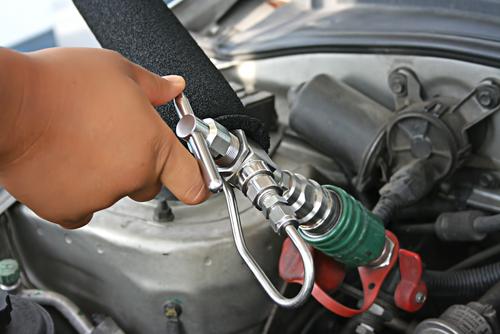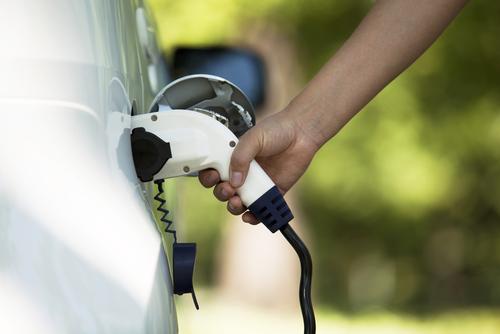Mining can harm the environment in addition to its impact on the workers, whose plight in various regions has been highlighted by human rights advocates. Many eco-friendly and conflict-free options are available, however.
A Look at the Problems
Mining for gold, silver, diamonds, gemstones, and other metals can result in water pollution, greenhouse gas emission, and soil erosion.
Dr. Doug Guthrie, dean of International Business and Management at the George Washington University School of Business, and a team of researchers compiled a report in 2010, titled “The Environmental Impact of Mining Precious Metals and Gemstones: The Case for Putting Jewelry Back Into Circulation.”
Guthrie explored the use of toxic chemicals in mining. Cyanide is used to separate gold from ore, for example. His report states that 20 tons of waste are produced for every ounce of gold. An average large-scale gold mine uses 1,900 tons of cyanide annually. Arsenic and other chemicals are used in mining other materials.
The waste can contaminate bodies of water, soil, and the air around mines, though the cyanide solution is used in a low concentration.

Workers drain away polluted water near the Zijin copper mine in Shanghang on July 13, 2010, after pollution from the mine contaminated the Ting river, a major waterway in southeast China’s Fujian province. (STR/AFP/Getty Images)
Much of the mining for resources used to produce jewelry takes place in developing countries, where oversight is often lacking and workers, local residents, and the Earth are not properly protected.
Pearls don’t require mining, but there are concerns in that industry too. When oysters are raised in nets, a lot of organisms grow on them, such as barnacles and sponges—a lot more than in their natural conditions. The process of washing them off can be problematic.
Kent E. Carpenter, a professor of biology at Old Dominion University in Virginia, told National Geographic: “If the wash goes directly back into the lagoon, then you are adding a lot of organic material. It may be too much for fish and other organisms to break down right away, so it could lead to algal blooms and deoxygenation—a small dead zone.”
Sustainablepearls.org works to spread best practices for the environment in the industry and a certification program may soon be in place to help consumer find the most eco-friendly pearls.

A worker harvests pearls in Nanjing of Jiangsu Province, China, on April 18, 2006. (China Photos/Getty Images)
What Can We Do?
1. Support organizations working to improve the global mining industry. Ethical Metal Smiths and Fair Jewelry Action are two such organizations.
2. Buy from eco-friendly jewelers, make your own, or buy locally made jewelry to cut down on transportation costs. See some pointers on all three options below.

A bracelet made from recycled paper is worn by Camilla, Duchess of Cornwall, given to her as she visited a school in Amman, Jordan, on March 12, 2013 in Amman, Jordan. (Chris Jackson-Pool/Getty Images)
Eco-Friendly Jewelry Retailers
Eco Artware focuses on eco-friendly jewelry, handcrafted and unique artistic pieces.
Green Oro tracks the materials from mine to store.
Style With Heart provides collection of various brands and styles in all price ranges that are fair trade and handmade. The metal, wooden, and stone jewelry comes from various parts of the world. The customer can choose locations.
Raw Eco Jewellery offers Bohemian chic style, with jewelry made of recycled, vintage, reclaimed, reused, and found objects.
Green Karat is a green circle certified company. It also recycles your old gold.

Brilliant Earth sells conflict-free diamonds and recycled gold, and donates 5 percent of its profit to local communities harmed by the diamond industry.
Sarah Hood makes her jewelry out of natural elements such as plants, acorns, and leaves.
Columbia Gem House is a fair-trade company doing its own mining, cutting, and branding.
Leber Jeweler Inc. is the creator of the environmentally conscious collection called Earthwise, which includes conflict-free diamonds and gemstones.
Diamonds Cultured and Diamond Nexus Labs provides lab-grown or cultured man-made diamonds.
Kyler Designs is an eco-friendly celebrity favorite.
Other places to find fair-trade jewelry include MercadoGlobal.org and TenThousandVillages.com

A woman wears a necklace made out of recycled paper by members of the Ushindi Women’s Initiative in the Soweto neighborhood of the Namuwungo slum in Kampala, Uganda, on March 1, 2008. (Walter Astrada/AFP/Getty Images)
Make Your Own
4WMN.com offers some great ideas for DIY jewelry.
Here’s a tutorial on how to make your own jewelry out of keys and washers:
*Lead image of jewelry via Shutterstock




